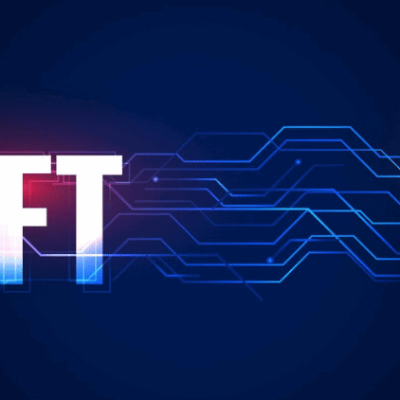As we delve into 2024, the crypto-mining industry stands at a crossroads marked by rapid technological advancements and shifting economic landscapes. The quest to identify the best coins for mining and assess the profitability of this endeavor is more crucial than ever. Many people wonder about the best coins to mine in 2024.
This article aims to navigate through these complexities, offering insights into the most lucrative coins to mine in 2024 and evaluating the sustainability of mining as a profitable venture.
Exploring the best crypto coins to mine in 2024


Understanding how to invest in crypto mining
If you’re looking to mine crypto coins in 2024, we have assorted the best options for you. Take a look:
1. Bitcoin (BTC)
Standing as the cornerstone of the cryptocurrency universe, Bitcoin continues to command attention with its unparalleled market value and prominence. Mining Bitcoin has become a sophisticated endeavor, demanding substantial computational resources that typically necessitate investment in specialized Application-Specific Integrated Circuit (ASIC) hardware.
The allure of Bitcoin’s market dominance and the lucrative rewards it can offer to keep it in the crosshairs of miners equipped with the necessary technological and financial resources.
- Coin ranking: #1
- Market cap: $1.25 trillion
- Block rewards: 6.25 BTC (~$ 398,000 at current price)
- Price performance: 49.23% price increase in a month.
For those interested in diversifying their mining endeavors, our guide on how to mine or stake Solana offers a comprehensive look at earning rewards with one of 2024’s most promising coins.
2. Litecoin (LTC)
As a close relative of Bitcoin, Litecoin offers a more accessible entry point into the mining sphere, characterized by its lower mining difficulty and quicker block generation times. This “silver to Bitcoin’s gold” employs ASIC miners, such as the Antminer L3+, facilitated by user-friendly mining software like EasyMiner and CGMiner.
The periodic halving events in Litecoin’s ecosystem, which reduce the rewards for mining a block, play a pivotal role in shaping its mining profitability over time. These events are critical moments that can influence miners’ strategies and the overall supply dynamics in the Litecoin market.
- Coin ranking: #19
- Market cap: $6.74 billion
- Block rewards: 6.25 LTC (~$ 570 at current price)
- Price performance: 34.48% price increase in a month.
3. Ethereum Classic (ETC)
Ethereum Classic represents the preservation of the original Ethereum blockchain’s principles, prioritizing immutability and decentralization in the wake of a contentious hard fork. The mining of ETC remains accessible to a broad range of participants thanks to its GPU-friendly architecture.
Mining software such as Claymore’s Dual Miner and PhoenixMiner allows for efficient mining operations on both AMD and Nvidia platforms, making Ethereum Classic a flexible option for miners with varying hardware setups. The blockchain’s commitment to these core values and the technical infrastructure supporting ETC mining fosters a diverse mining community.
- Coin ranking: #23
- Market cap: $4.98 billion
- Block rewards: 2.56 ETC (~$88 at current price)
- Price performance: 36.32% price increase in a month.
If you’re curious about mining meme coins, follow our step-by-step tutorial on how to mine Dogecoin, a popular choice among crypto miners looking for profitability and community support in 2024.


Looking at the best crypto coins to mine in 2024
4. Dogecoin (DOGE)
What began as a playful experiment has evolved into a significant player within the cryptocurrency space, with Dogecoin’s mining process leveraging the energy-efficient Scrypt algorithm. This algorithmic choice allows for GPU-based mining setups, lowering the entry barrier for individual miners and small-scale operations.
Dogecoin’s unexpected rise to prominence, fueled by a vibrant community and high-profile endorsements, has cemented its status as a viable mining option, offering a unique blend of cultural significance and technical accessibility.
- Coin ranking: #9
- Market cap: $23.46 billion
- Block rewards: 10,000 DOGE (~$1642 at current price)
- Price performance: 109% price increase in a month.
5. Kaspa (KAS)
The introduction of Kaspa brings a fresh perspective to the mining landscape with its innovative blockDAG architecture, designed to facilitate rapid block rates and enhance decentralization. This structure allows for efficient solo mining, even for those with relatively lower hash rates, and the use of the kHeavyHash algorithm underscores Kaspa’s commitment to energy efficiency.
Kaspa’s approach aims to lower the technological and financial barriers to entry, making it a particularly appealing option for miners who prioritize sustainability and inclusivity in the rapidly evolving digital currency ecosystem.
- Coin ranking: #34
- Market cap: $3.81billion
- Block rewards: 130.81 KAS (~$22 at current price)
- Price performance: 65.30% price increase in a month.
6. Monero (XMR)
Monero’s dedication to privacy and security sets it apart in the mining community, offering a haven for those who value anonymity in their transactions. The RandomX algorithm, designed to be resistant to ASIC mining, democratizes access to Monero mining by enabling CPU-based operations.
This approach opens the door for a wider array of participants, from hobbyists to more serious miners lacking specialized hardware, to engage in the mining process. Monero’s focus on privacy and the accessibility of its mining process underscores the cryptocurrency’s commitment to security and inclusivity within the digital economy.
- Coin ranking: #46
- Market cap: $2.67 billion
- Block rewards: 0.6 XMR (~$87 at current price)
- Price performance: 3.86% price increase in the past six months.
Before deciding to mine Solana, consider exploring its investment potential in our analysis on whether Solana is a good buy for 2024 to ensure your mining efforts align with your financial goals.
How to choose the best crypto coins to mine in 2024?
Choosing the best cryptocurrency coins to mine in 2024 depends on various factors and is a complex decision. However, here are some crucial criteria to consider when selecting a coin for mining:
- Market value: The coin’s current market price significantly impacts profitability. Even readily mineable coins might not be worthwhile if their price is low.
- Mining difficulty: Higher difficulty translates to needing more powerful hardware and consuming more electricity, increasing operational costs. Choose coins with a balance between profitability and difficulty that aligns with your resources.
- Coin supply and distribution: Consider the total coin supply and its distribution model. Coins with limited or capped supply might hold the potential for value appreciation over time, impacting overall profitability.
- Mining algorithm: Different coins use different mining algorithms. Choose an algorithm compatible with your available hardware. Popular options include SHA-256 (Bitcoin) and Ethash (Ethereum Classic).
- Hardware requirements: Some coins require specialized ASIC miners, while others can be mined with GPUs or even CPUs. Consider your budget and access to suitable hardware when selecting a coin.
- Mining pool availability: Joining a mining pool increases your chances of earning rewards compared to solo mining. Ensure there are reputable and established mining pools available for your chosen coin.


Unraveling the best ways to invest in crypto mining
Factors that affect crypto mining profitability in 2024
If you’re looking to mine crypto coins in 2024, make sure you take these factors into consideration:
1. Hash rate
The hash rate and difficulty level are pivotal factors influencing mining profitability. The hash rate directly impacts a miner’s ability to solve cryptographic puzzles and, hence, secure mining rewards.
Higher hash rates increase the chances of earning rewards but also escalate the difficulty level of the puzzles to maintain the blockchain’s stability and block generation rate. As the overall network hash rate increases, the difficulty level adjusts accordingly, making mining more challenging and potentially less profitable for individuals with lower computational power.
2. Initial setup and ongoing expenses
Capital investments and continuous operational expenses are substantial considerations for anyone entering the mining space. Setting up a mining operation requires purchasing hardware such as ASICs or GPUs, which can be costly.
Additionally, there are expenses related to securing a suitable mining environment, cooling systems, and reliable internet connectivity. Beyond the initial setup, miners face ongoing costs, including electricity, maintenance, and hardware upgrades, to keep pace with increasing network difficulty levels.
3. Market volatility
Market volatility significantly impacts mining profitability by affecting the value of the rewards earned. Cryptocurrency coin prices can fluctuate widely, and the value of mining rewards can change dramatically from the time they are earned to when they are converted into fiat currency.
High volatility can offer substantial gains but also poses risks, as a sudden drop in cryptocurrency prices can quickly turn a previously profitable operation into an unviable one.
The profitability of mining Bitcoin could significantly change following the next halving event; understand the implications and expectations for the 2024 Bitcoin halving to navigate your mining strategy.
4. Energy consumption and sustainability
In 2024, the industry has seen a notable shift towards solar, wind, and hydroelectric power to fuel mining operations, reducing carbon footprints and operational costs.
Sustainability initiatives have also gained momentum, with major mining operations and pools pledging to achieve carbon neutrality. Innovations such as liquid immersion cooling technologies have further reduced the energy required for cooling mining equipment, which is a substantial part of a mining operation’s energy consumption.
5. Regulatory environment
The regulatory environment for crypto mining in 2024 varies significantly across different countries, affecting mining operations worldwide. Some regions have embraced crypto mining, whereas others have imposed stringent regulations or outright bans.
Countries like Kazakhstan and Canada have become attractive destinations for miners due to their relatively low electricity costs and favorable regulatory climates. Meanwhile, China’s crackdown on crypto mining has prompted a mass exodus of miners seeking more hospitable environments, significantly impacting the global distribution of mining power.
Future trends in crypto mining
Here’s a speculative glance into the future of crypto mining. Take a look:
- Quantum computing: While still in its developmental stages, quantum computing presents a potential future challenge and opportunity for cryptocurrency mining. Quantum computers could drastically alter the mining landscape by solving cryptographic puzzles at speeds unattainable by current technology. However, this would also drive the development of quantum-resistant algorithms, reshaping the security and mining protocols of cryptocurrencies.
- Shift from proof-of-work (PoW): The energy-intensive PoW consensus mechanism, currently used by Bitcoin, might face increasing scrutiny. This could lead to the adoption of alternative, more energy-efficient consensus mechanisms like Proof-of-Stake (PoS) in future blockchain designs.
- GPU mining vs. ASIC dominance: The dominance of specialized ASIC miners in PoW mining might be challenged by the development of more efficient GPU mining algorithms and potentially ASIC-resistant coins. This could lead to a more decentralized mining landscape with broader participation from individual miners using readily available hardware.
- Decentralized cloud mining solutions: We might see the emergence of decentralized cloud mining platforms built on blockchain technology, aiming to offer greater transparency, security, and control to users compared to traditional cloud mining services.
- Innovative mining models: DeFi and non-fungible tokens (NFT) platforms could introduce innovative mining models that reward miners not only for processing transactions but also for participating in the ecosystem’s security and governance. For instance, miners could earn additional rewards for providing liquidity or securing DeFi protocols, opening new revenue streams.
Stay ahead in the mining game by familiarizing yourself with the secret crypto trends set to redefine the industry in 2024, ensuring your mining operations remain profitable and relevant.


Checking out the future crypto trends
Conclusion
Navigating through the intricacies of crypto mining in 2024 reveals a landscape filled with both challenges and opportunities. The profitability of mining not only hinges on selecting the right coins but also on adapting to the latest technological innovations, optimizing for energy efficiency, and staying abreast of market trends.
Despite the hurdles, strategic adjustments and informed decision-making can lead to successful mining endeavors. The future of crypto mining remains bright for those who can skillfully adapt to its evolving dynamics. Finally, it is an enticing prospect for those willing to invest the effort and resources.





